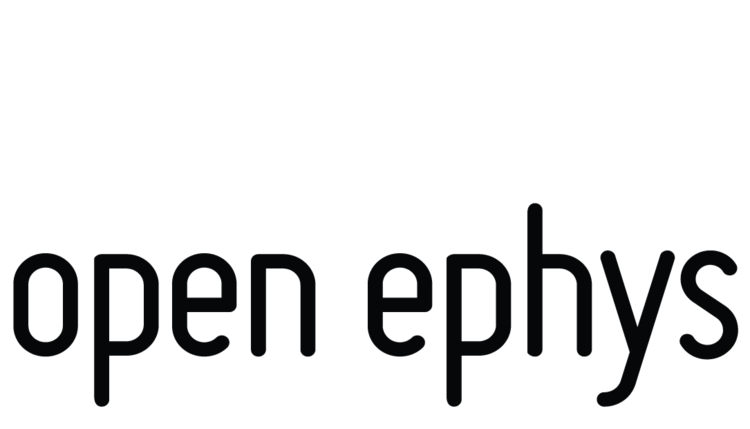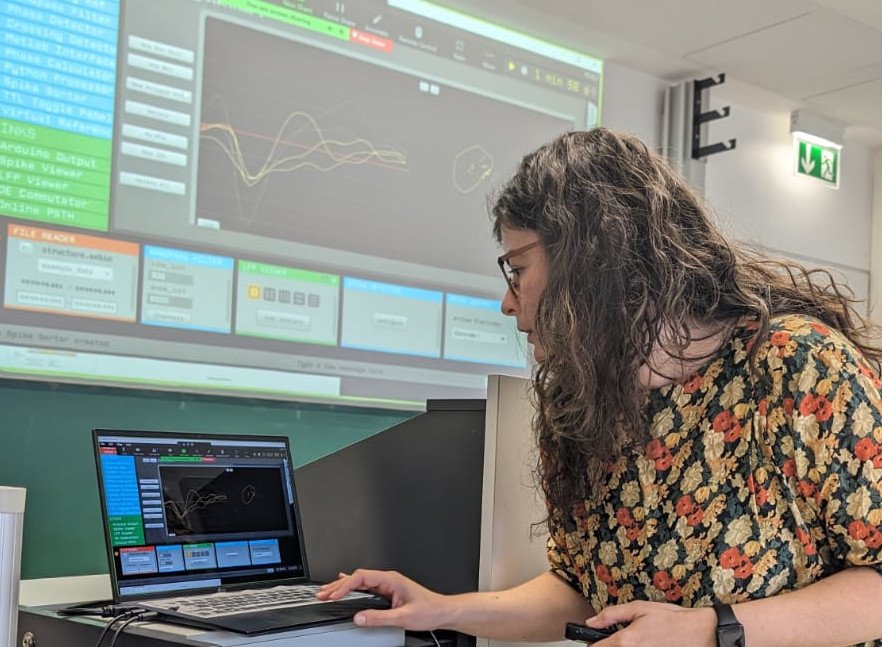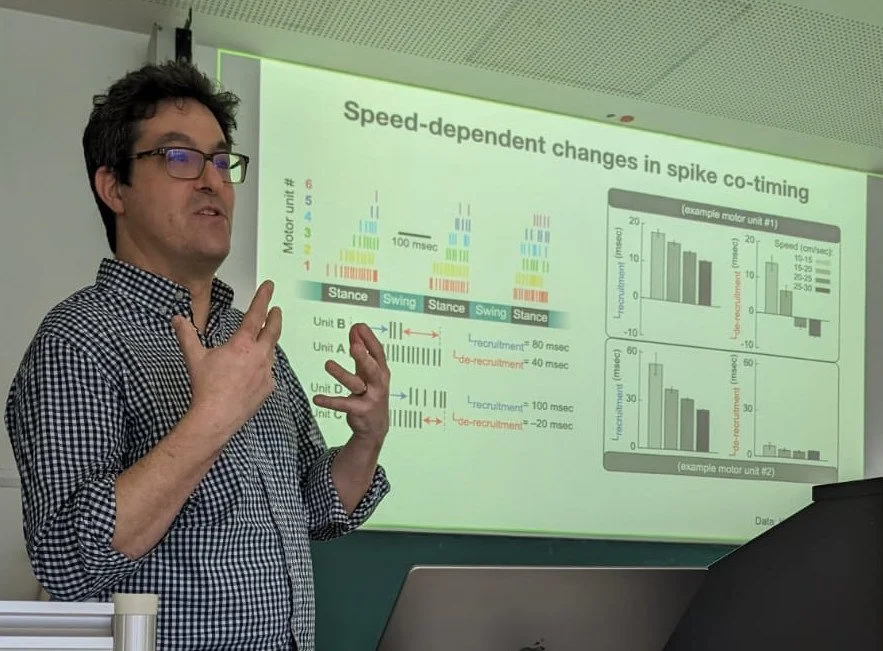We just wrapped another fantastic workshop, this time about using high-resolution EMG recordings to untangle single motor unit contributions to behavior! The workshop was focused around the new high-density muscle electrode arrays called myomatrix, and it turns out these are really easy to use with the Open Ephys Acquisition Board to record single-unit EMG activity. Let’s dive into how…
Flexible high-density myomatrix arrays for EMG single-unit recordings in freely-behaving animals.
The myomatrix arrays are planar, flexible multielectrode arrays for subcutaneous surface or intramuscular EMG recordings produced by the Center for Advanced Motor BioEngineering Research (CAMBER). In their current form, they contain 4 threads each with 8 contacts of 100 x 200 μm of < 1MOhm impedance, and a ground pad. They interface with a 32 channel (36 pins, 4 guide posts) Omnetics connector which makes them compatible with most headstages used in modern digital extracellular electrophysiology acquisition systems. The arrays come in different lengths for different target muscle groups, and users can request custom adaptations. They have been tested on a wide variety of species including rodents, songbirds, and even humans. You can read about their specifications and applications in detail in this research article, and find more about CAMBER’s work in fabricating and distributing these devices on their website.
Since these arrays uniquely allow single spike EMG resolution, researchers can look at individual motor unit contributions to muscle activity during behavior. The multichannel configuration can be used with a local referencing scheme to yield 16 channel bipolar input, or 32 channel monopolar input recordings using post-hoc digital referencing. The high channel counts and single unit resolution was previously inaccessible with traditional wire bulk EMGs. The ease of access to pre-fabricated electrodes with standard connectors also enables researchers to get started with common digital extracellular electrophysiology acquisition systems based on the Intan RHD2000 series bioamplifier chip such as the Open Ephys Acquisition Board.
The implant procedure is straightforward for experienced surgeons, and consists of making a headcap to cement the device connector to the head, running the array subcutaneously and suturing the array electrode contacts into place either intramuscularly or on the muscle surface. Arrays implanted chronically or intramuscularly are not reusable, while surface arrays used acutely can be reused around 4 times. After animal recovery, behavioral testing can start and units are best isolated during 1-2 weeks after implantation, while bulk EMG can still be recorded for several more weeks.
The array is then connected to a headstage for signal amplification and digitization, and the Open Ephys Acquisition Board is used for acquisition of headstage data and any additional analog and digital inputs you may need for data from other sensors or synchronization with behavior. You can take advantage of all the Open Ephys GUI functionality for signal visualization and online processing, or use the Bonsai programming language for integrated acquisition and behavioral arena control with hundreds of options for third-party cameras, lickometers, nose-poke detectors, etc. This makes it possible to dream up experiments during naturalistic behavior such as perturbations at specific gait phases based on muscle activity. And for sub-ms closed-loop latencies, a bipolar ONI-compliant coaxial headstage to hook up the array to our multimodal ONIX system would be all you need. With creative implantation techniques, the myomatrix arrays could even be used simultaneously with ephys headstages and miniscopes!
We taught about these approaches at the single unit EMG workshop organized by Graziana Gatto in collaboration with CAMBER (Sam Sober, Amanda Jacob), Open Ephys, Büschges Lab and the CRC1451 on Motor Control that took place in Cologne, Germany in March 2024, and plan to continue next year!
Amanda Jacob, Graziana Gatto, Cecilia Herbert and Sam Sober teaching at the single-unit EMG Workshop in Cologne.
Workshop participants learnt about the myomatrix arrays, neural data acquisition in the Open Ephys ecosystem and synchronization with behavioral tools, surgical techniques, spike sorting, and discussed the use of muscle activity as readout for behavior that provides more dimensions to traditional video based analysis of movement.
Single-unit resolution EMG recordings in the Open Ephys GUI with the Open Ephys Acquisition Board, and workshop participants deep at work!
The Gatto lab at Uniklinik Köln studies sensorimotor adaptation, characterizing the spinal circuits underlying reflexive movements in physiological, adaptive and disease conditions. They have spearheaded user testing of the myomatrix arrays, working with the CAMBER team to improve their development from the start, and increase adoption thanks to training opportunities such as this workshop. Thank you Graziana and the Gatto lab for being fantastic hosts.
CAMBER is based at Emory University and Georgia Tech in Atlanta, Georgia, USA. Their purpose is to develop and disseminate next-generation tools for investigating motor control. They have supply list, tutorials and example protocols to help you get started. They are currently providing myomatrix arrays free of charge - get in touch with them!
You can get an acquisition board and myomatrix-compatible headstages from the Open Ephys Store.
If you would like extra help, we can provide remote personalized Training to get you started using our systems.
Until next time!








